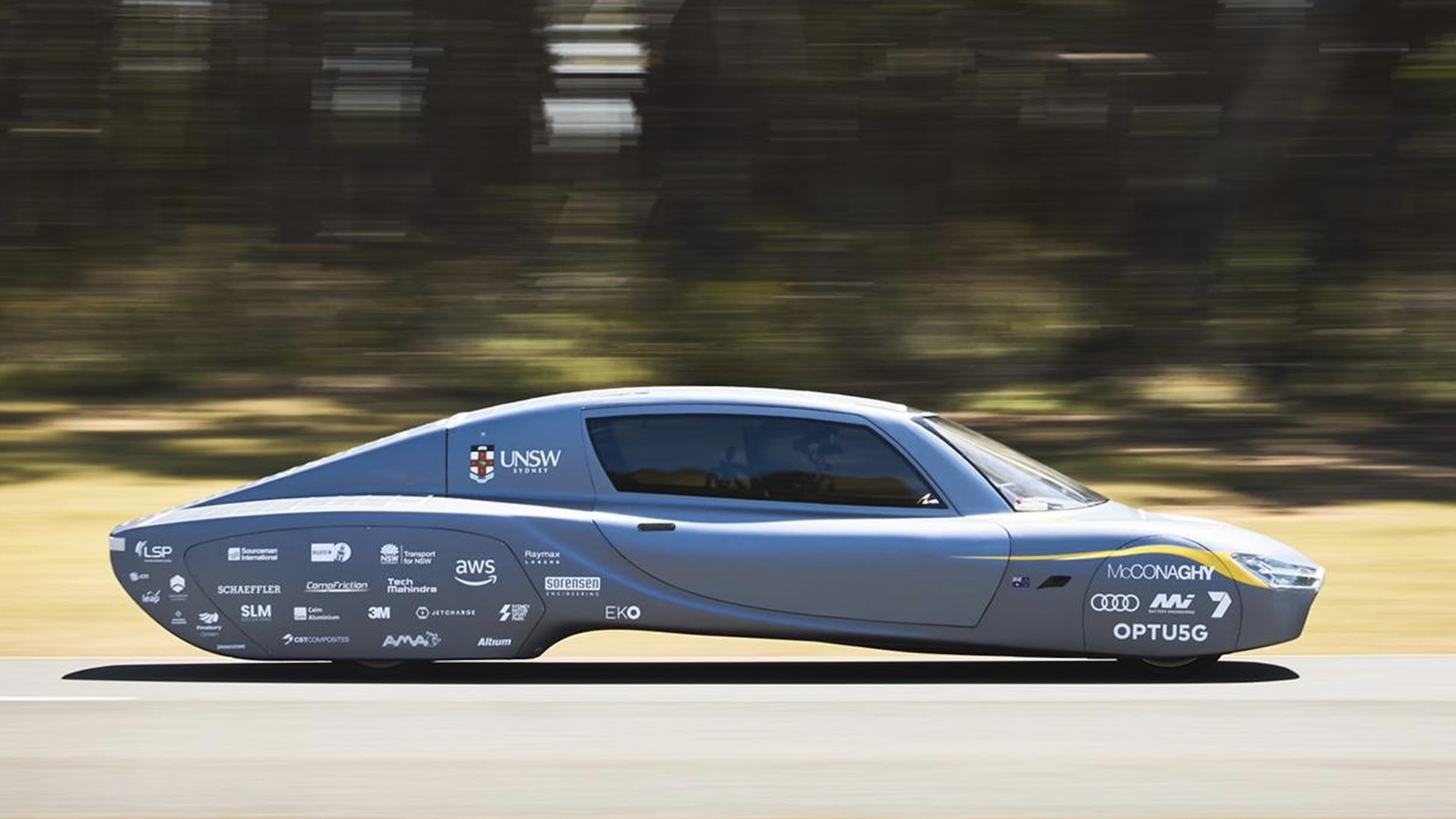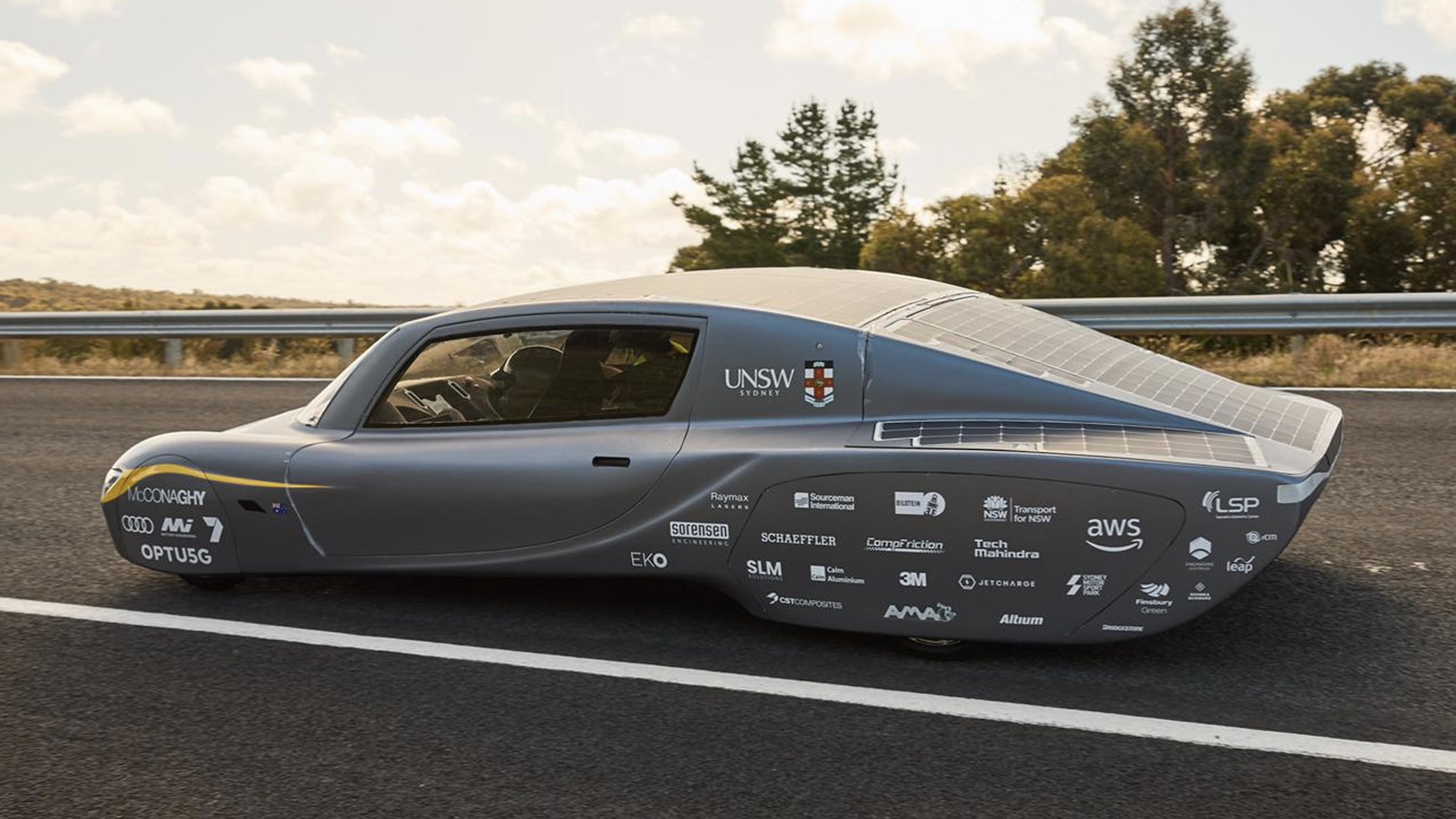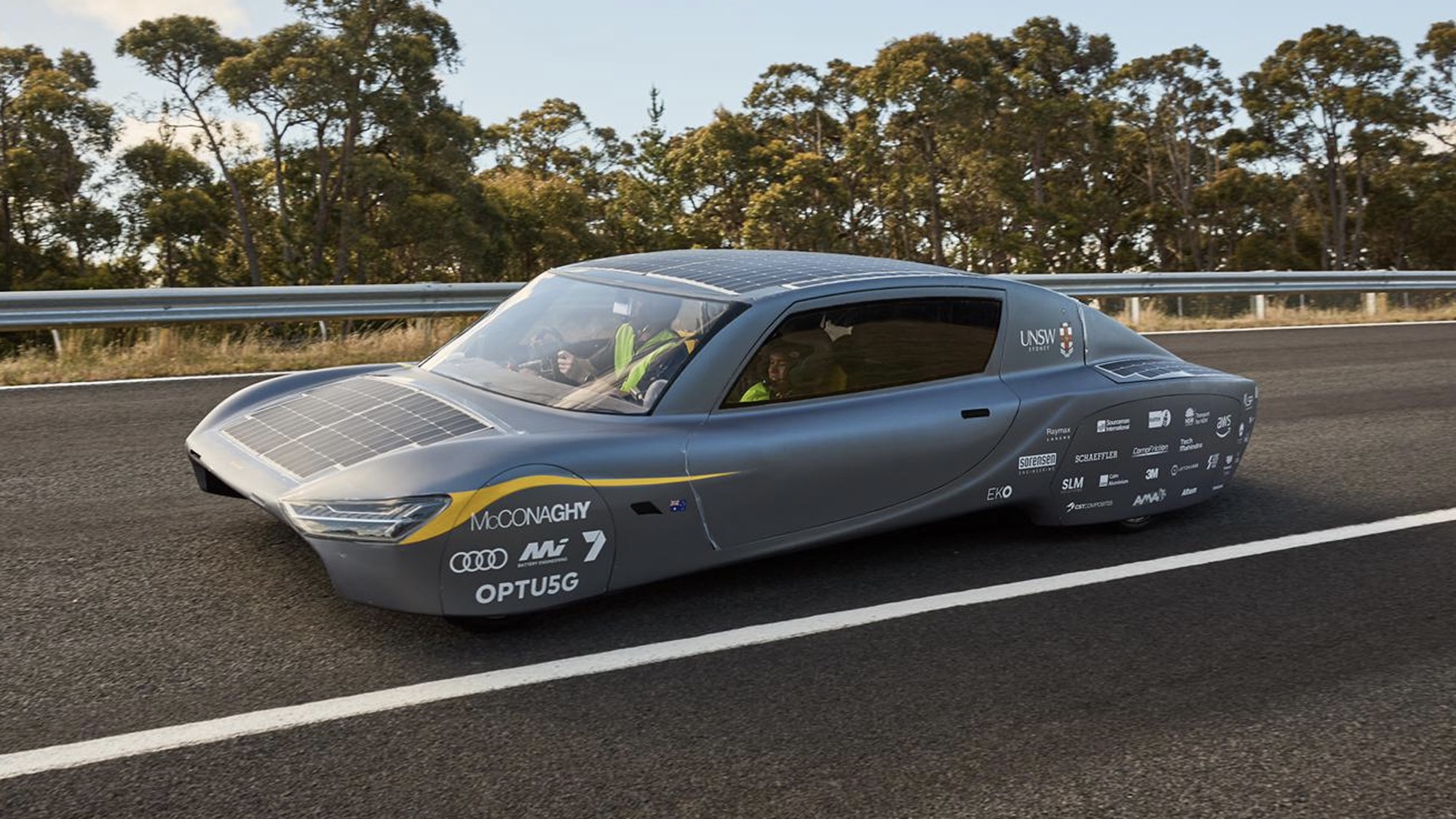
This solar-powered EV is a world-record-breaking speed machine*
*That speed is about 52mph, by the way. But it’s over the course of 620 miles, without stopping to recharge...
Australian university students have built a world-beating car, claiming the Guinness record for the fastest EV over 1,000km without stopping to recharge. Although that’s not to say the Sunswift 7 you see above wasn’t recharged at any point – after all, those solar panels are doing exactly what you think they are.
Confirmed and recognised by the Guinness Book of Records, the solar-powered Sunswift 7 racked up 1,000km (about 620 miles) at an average speed of 84.25km/h, or about 52mph, becoming the first to dip below the 12-hour mark – and reclaiming the speed record for Australia in the process.
And yes, colour us every shade of surprised that a solar car world record was set in a country with an abundance of sun so omnipresent that it verges on an assault.
Even so, it’s not like it was just a case of slapping some solar panels to the roof of a Tesla and going hypermiling. The Sunswift 7 might be a student project, but it’s something of a point of pride for the University of New South Wales. And the students? Well, they could probably tangle your mind into something resembling the Gordian knot in a matter of minutes. As does the car, to be honest.
The Sunswift 7 has a hand-laid, one-off, carbon-fibre floor pan and bodywork panels, a drag coefficient of just 0.095Cd and a final price tag north of £500,000. It was developed under the auspices of ex-Red Bull F1 head of operations, Richard Hopkins, and honed with support from companies like Audi, IBM and Bilstein. That drag coefficient, by the way, means the Sunswift’s 38kWh battery can take it a full 1,500km (932 miles) without needing to recharge.
The hand-laid carbon-fibre that made such slippery aero possible is the work of McConaghy Boats, the builders behind Wild Oats XI, one of the most successful racing yachts of all time, winning the Sydney to Hobart race nine times. Oh, and James Cameron’s Deepsea Challenger, the bathyscaphe he took to the bottom of the Challenger Deep, the deepest part of the ocean – nearly seven miles below the surface.
And the suspension – custom-made by Bilstein’s Australian arm – had to be light enough to not add a weight penalty to the 500kg car and precisely tuned to hold the Sunswift at the exact ride height for optimal aero efficiency. And, not to cast aspersions on other countries’ infrastructure or anything, but also strong enough to handle Australian roads. Which means cattle grids that feel like driving over industrial ladders, camber changes that basically illustrate chaos theory and pot holes you could lose a whole cooking set in.
But why engineer such military (or indeed mithril) grade suspension? Because while this record was set around the ‘Highway Circuit’ at the Australian Automotive Research Centre proving grounds in Victoria, the Sunswift 7 was actually designed for something of an Australian mainstay – the World Solar Challenge.
For anyone unfamiliar, the Solar Challenge is a biennial race from the top of Australia to the bottom, driving straight through the Outback along regular Australian highways. And, as the name suggests, it means getting from Darwin to Adelaide – a trip of more than 1,800 miles – by solar power alone.
But when the 2021 race was cancelled due to the exact reason you’d expect, the team set its sights on other challenges. Apparently, the goal was to knock over 1,000km in 10 hours, resulting in a rather neat 100km/h average speed, but various impediments – including a tyre puncture and an issue with the battery management software – padded out the runtime. Even so, the Sunswift 7 managed to do 1,000km in 11 hours, 52 minutes and eight seconds – a new world record for a new, world-beating car.
Top Gear
Newsletter
Thank you for subscribing to our newsletter. Look out for your regular round-up of news, reviews and offers in your inbox.
Get all the latest news, reviews and exclusives, direct to your inbox.










